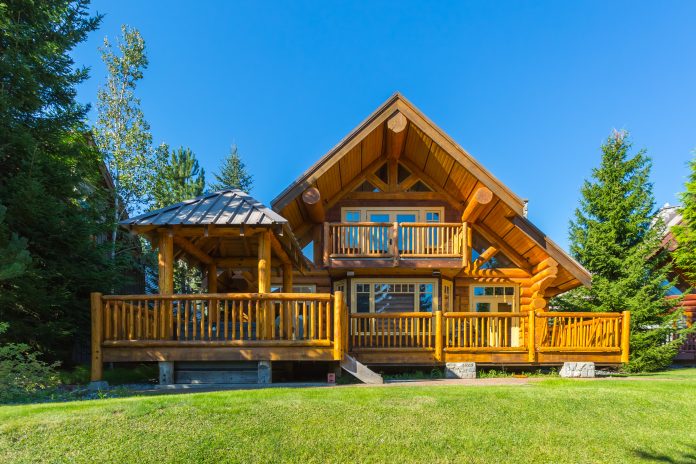There’s just something about a log home. Even if you’ve never actually lived in one, you can picture it, right? A warm fire crackling in the corner, the smell of fresh-cut pine lingering in the air, maybe snow piling up outside while you’re tucked in with a hot cup of coffee.
Now, picture all that… in California.
When most people think of California living, they think of palm trees, beaches, and maybe overpriced lattes in San Francisco. What often gets overlooked is the other side of California—the mountains, the forests, the vineyards, and the small towns where log homes actually fit like a glove. From Big Bear to Shasta, Tahoe to Sonoma, California has a log home scene that’s every bit as charming as the Rockies or Appalachians.
And here’s where I get personal: my dream home has always been a log-and-stone house smack in the middle of a vineyard. Picture this—golden grapes stretching out on all sides, stone base with timber walls rising up, and maybe a porch where you can sip a glass of cabernet you “accidentally” told your vineyard workers to set aside. Yeah… I’m pretty sure I’d never leave. (Laughing here, because if I had that place, good luck getting me to hop on another Zoom meeting ever again.)
The Appeal of Log Homes in California
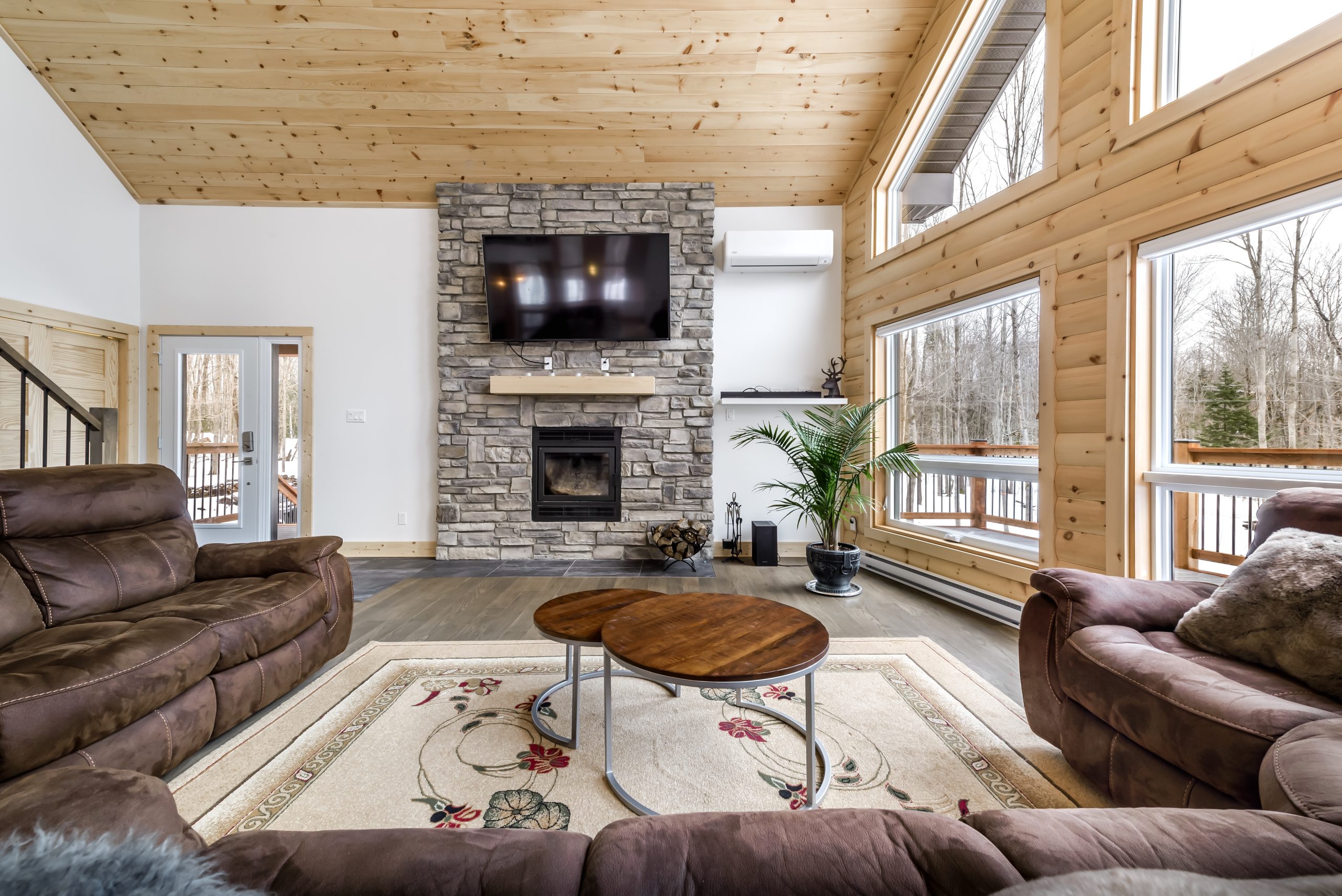
So what is it about log homes that hooks us? Why do so many people stop scrolling on Instagram when they see one nestled in the trees?
They Feel Like a Getaway, Even When They’re Your Everyday
Living in California can feel busy, expensive, and stressful. A log home has this uncanny way of slowing everything down. Whether it’s the rustic look, the way wood smells in the heat, or just the “cabin in the woods” vibe, you can live in a log home full-time and still feel like you’re on vacation.
I’ve visited plenty of overlanding spots in California, and sometimes, tucked behind a grove of pines, you’ll spot a log home. Every single time, I catch myself thinking, “Yeah, that’s the life.”
They’re Uniquely Californian in Their Own Way
No, log homes didn’t originate here. But when you see one in the Sierra Nevadas, or along the edges of Tahoe, or in a vineyard valley with stone accents (see where I’m going?), they just work. California is all about mixing cultures and lifestyles, and log homes slide into that mix beautifully.
They Age Gracefully
Most modern tract homes in California… well, they don’t age well. You know the stucco cracks, the beige paint fades, and the “modern” kitchen feels dated in five years. But a log home? It develops character. Every knot in the wood tells a story. Every little crack just adds charm.
Where You’ll Find Log Homes in California
California is a massive state, and not every climate is kind to logs. You won’t find many log homes in Huntington Beach, for example. But in these areas, they thrive:
- Big Bear & Lake Arrowhead – Southern California’s mountain retreat, just a couple hours from LA. Snow in the winter, cool in the summer, and log cabins everywhere.
- Lake Tahoe – If you want that classic log home vibe with alpine lakes and ski slopes nearby, Tahoe is your place.
- Sonoma & Napa Valleys – This is where my personal fantasy vineyard log home fits in. The idea of sipping wine on a timber porch as the sun sets over rolling hills… I mean, come on, it doesn’t get better than that.
- Northern California (Shasta, Trinity Alps, Yosemite area) – Rugged, remote, and full of natural beauty. Perfect backdrop for a log home.
- Gold Country (Placerville, Nevada City) – Historic mining towns where rustic architecture never went out of style.
My Vineyard Dream (And Why Log + Stone is the Perfect Match)
Okay, let me indulge myself for a second. If I could wave a magic wand, my dream house is a hybrid: stone on the bottom, logs on the top, nestled into the middle of a vineyard. Why?
- Stone grounds the structure – It looks timeless, handles weather, and gives that castle-like strength.
- Logs bring warmth – You can’t beat the rustic, cozy vibe of timber walls.
- Vineyard views = endless beauty – Plus, the idea of having wine literally outside your door isn’t terrible.
Sometimes people talk about dream homes with infinity pools or skyscraper penthouses. For me? It’s stone, logs, grapes, and maybe a wood stove for winter. (Also, I’d probably get a hammock for the porch. That way when someone asks where I am, the answer is always “the hammock.”)
Why Log Homes Work So Well in California’s Lifestyle
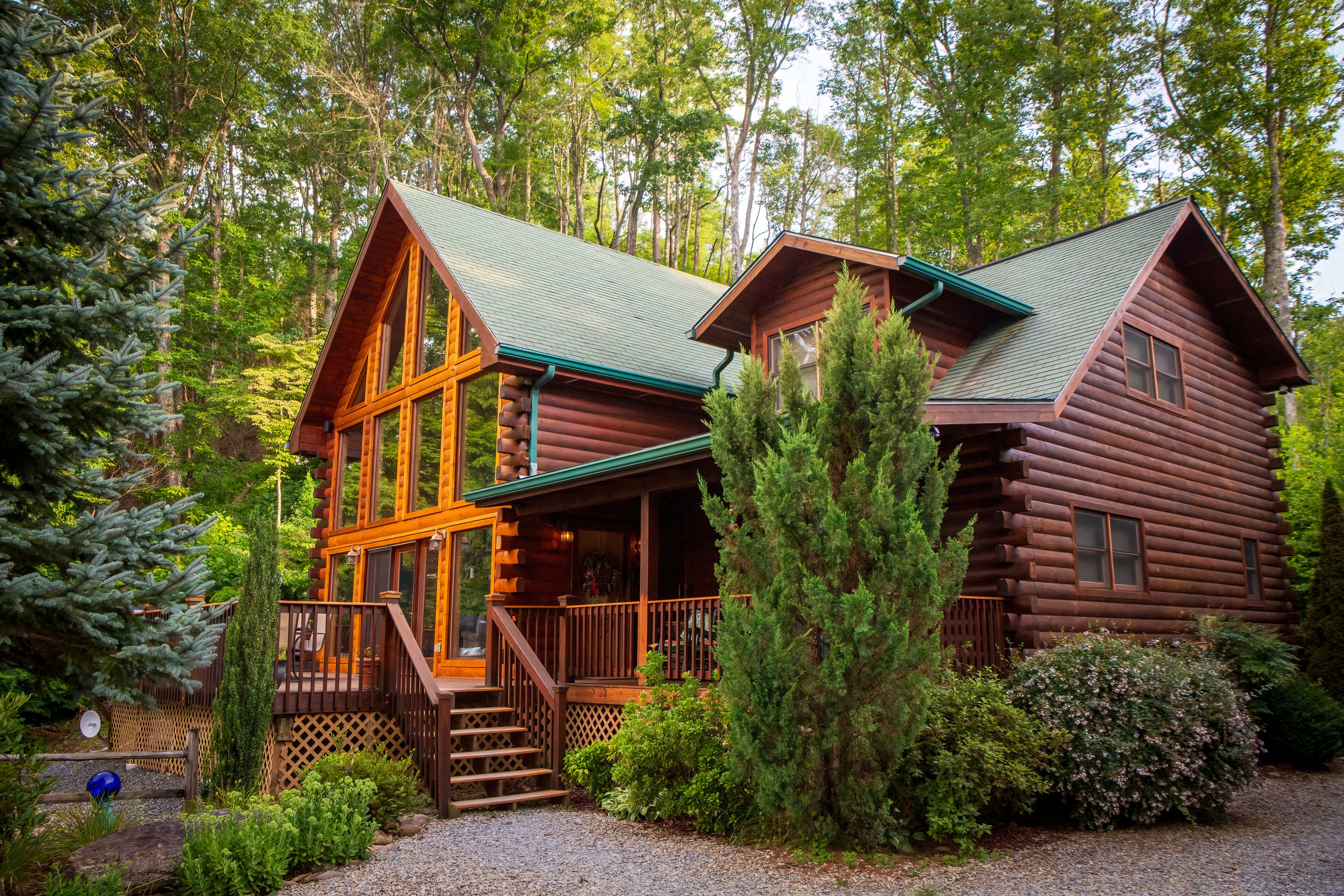
Here’s the kicker: California is a state of contrasts. You can surf in the morning, ski in the afternoon, and sip wine by dinner. Log homes match that eclectic vibe because they’re versatile.
- For Outdoor Lovers – You’re literally surrounded by nature, inside and out.
- For Families – Log homes feel more alive than drywall boxes. Kids grow up with space to explore.
- For Retirees – Peace, quiet, and the kind of house that doesn’t feel sterile.
- For Remote Workers – Imagine taking Zoom calls with a log wall as your backdrop. No fake “cabin” filter needed.
And let’s be honest—if you live in a log home in California, people automatically assume you know how to chop wood, fix a roof, and probably wrestle a bear if needed. (I’m not saying that’s true, but hey, the image is kind of cool.)
The Practical Side: Maintenance & Challenges
Now, let’s not sugarcoat it. A log home in California comes with its quirks:
- Wildfire Risk – You need defensible space, treated logs, and a solid insurance plan.
- Maintenance – Staining, sealing, and checking for pests isn’t optional. Logs need care.
- Cost – Custom log homes aren’t cheap, especially in California where everything costs more.
But here’s my personal take: if you’re going to spend a fortune anyway (and let’s be honest, it’s California—we’re all spending a fortune), you might as well invest in a home that actually feels like yours.
Financing a Log Home in California
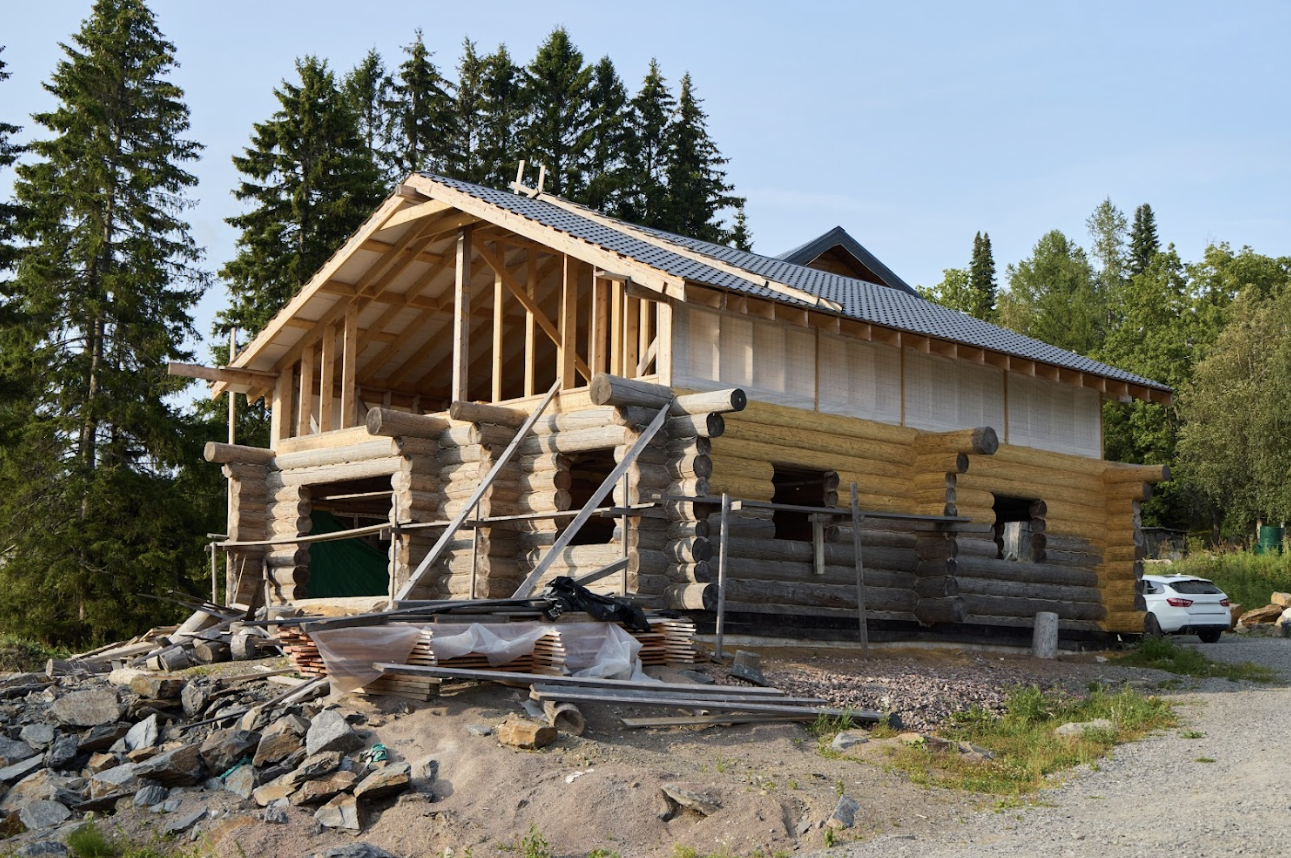
This is where it gets interesting. Financing a log home isn’t always straightforward. Traditional lenders sometimes treat them like “non-standard properties.” Translation: more hoops to jump through.
- Specialized Lenders – There are banks and credit unions that focus on log and custom homes.
- Higher Down Payments – Don’t be surprised if 20–25% is required.
- Appraisal Challenges – Fewer log homes mean fewer comps, which can make appraisals tricky.
If you’re seriously considering it, get pre-approved with a lender who has log-home experience. Otherwise, you’ll be explaining to some banker in Los Angeles why your walls aren’t made of drywall, and trust me, they won’t get it.
Log Home Design Trends in California
California log homes aren’t your grandpa’s rustic cabin anymore. Some of the coolest builds I’ve seen mix modern design with traditional timber. Think:
- Floor-to-ceiling windows to bring in vineyard or mountain views.
- Stone fireplaces that anchor open living rooms.
- Open floor plans that feel more contemporary.
- Solar panels + off-grid systems for sustainability (hey, it’s California).
- Luxury kitchens that balance rustic exteriors with modern interiors.
And yes, a wine cellar built into the stone foundation? That’s not optional in my dream build—that’s a requirement.
Try Before You Buy: Renting Log Homes in California
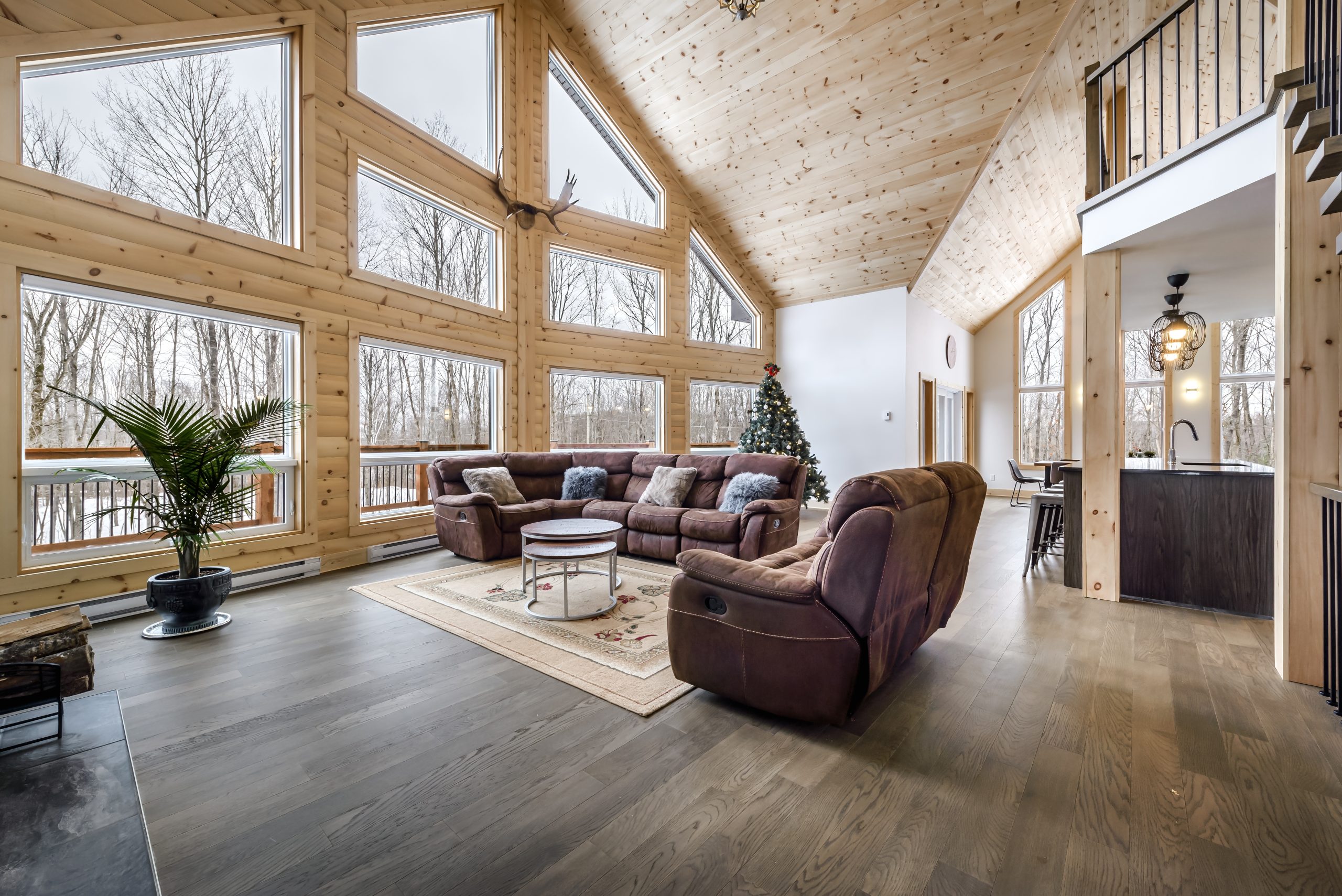
Not sure if buying a log home is for you? Easy fix—rent one first.
California has dozens of log cabins you can book on Airbnb or Vrbo, especially in Big Bear, Tahoe, and Yosemite. Spend a weekend in one and you’ll quickly learn the lifestyle: the cozy mornings, the creaky floors, and the way coffee somehow tastes better when you drink it surrounded by timber.
Pro tip: rent in both summer and winter if you can. You’ll see how a log home feels year-round.
Fun Facts About Log Homes
- Some of the oldest log cabins in America are still standing after 200+ years. Try finding a stucco house in LA that’ll last that long.
- Wood naturally insulates, which means cozy winters and surprisingly cool summers.
- Log homes are often built by hand, which makes them feel more crafted than mass-produced.
- In Scandinavian countries, log homes are still one of the most popular styles, proving their design longevity.
Final Thoughts: Why Log Homes Have My Heart
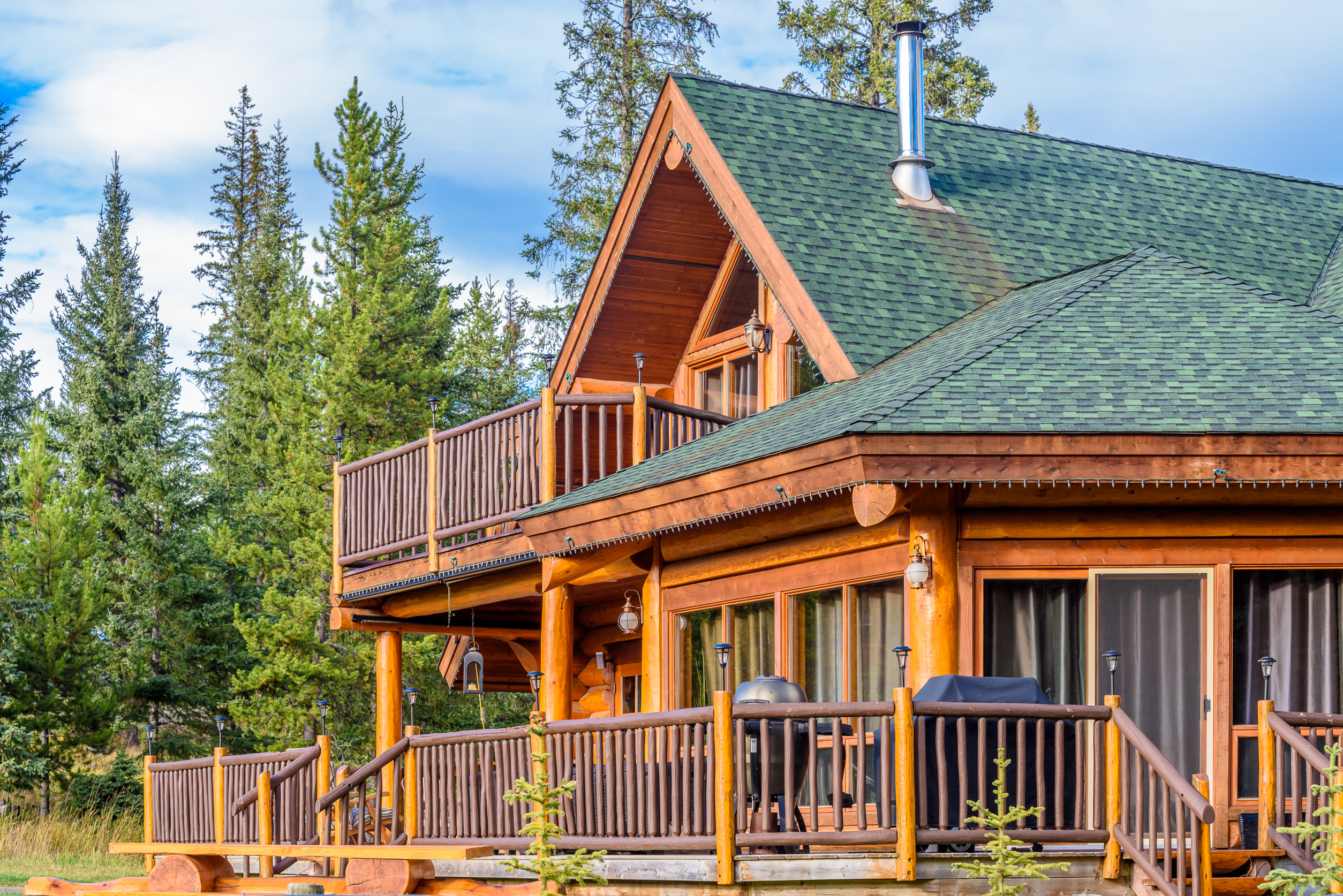
At the end of the day, the charm of log home living in California isn’t just about aesthetics. It’s about lifestyle. It’s about stepping into a space that feels timeless, rooted, and uniquely yours.
For me, the dream will always be that log-and-stone vineyard house. And even if that’s years away, just thinking about it keeps me inspired.
And who knows—maybe by the time I actually build it, the vineyard will have produced enough wine to cover the cost of maintenance. (Hey, a guy can dream, right?)
Frequently Asked Questions
How much does it cost to build a log home in California?
Log home costs in California vary significantly based on size, location, and customization. Expect to pay anywhere from $200-400 per square foot for a quality log home, with luxury builds reaching $500+ per square foot. This includes materials, construction, and finishing work. Remember that California’s higher labor costs and building regulations can add 20-30% compared to other states.
Are log homes safe in California’s wildfire-prone areas?
With proper precautions, log homes can be made fire-resistant. Key strategies include creating defensible space around the property, using fire-retardant treatments on logs, installing metal roofing, and ensuring proper insurance coverage. Many log home owners also invest in sprinkler systems and maintain clear evacuation routes.
What kind of maintenance do log homes require?
Log homes need regular maintenance including annual inspection for cracks or gaps, re-staining every 3-7 years depending on weather exposure, pest control measures, and checking the foundation and roof systems. Budget around 1-3% of your home’s value annually for maintenance costs.
Can I get a conventional mortgage for a log home?
While possible, conventional mortgages for log homes can be challenging. Many lenders require specialized appraisals and may ask for higher down payments (20-25%). Working with lenders experienced in log home financing or credit unions that specialize in custom properties often yields better results.
What’s the best climate in California for log homes?
Mountain and foothill regions with moderate humidity work best for log homes. Areas like Lake Tahoe, Big Bear, Sonoma County, and the Sierra Nevada foothills provide ideal conditions. Avoid coastal areas with high humidity or desert regions with extreme temperature swings.
How energy efficient are log homes?
Log homes can be surprisingly energy efficient due to wood’s natural insulating properties and thermal mass. However, proper chinking, quality windows, and good design are crucial. Many California log homes incorporate solar panels and energy-efficient appliances to maximize sustainability.
Can I build a log home on a small lot?
Yes, log homes can be designed for smaller lots, though they’re most popular on larger properties that complement the rustic aesthetic. Check local zoning laws and HOA restrictions, as some California communities have specific requirements for log construction.
How long does it take to build a log home?
Construction timelines vary based on complexity and weather. A typical log home takes 6-12 months to complete once construction begins. This includes foundation work, log installation, roofing, and interior finishing. Custom designs or complex sites may extend the timeline.
Do log homes hold their value in California?
Well-maintained log homes in desirable California locations typically hold their value well, especially in mountain and wine country areas. Their unique character and craftsmanship appeal to specific buyer segments. However, they may have a smaller resale market compared to conventional homes.
What permits do I need to build a log home in California?
You’ll need standard building permits, which vary by county. California’s strict building codes apply to log homes, including seismic requirements, energy efficiency standards, and fire safety regulations. Work with contractors familiar with both log construction and California building codes to ensure compliance.
